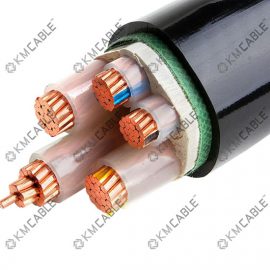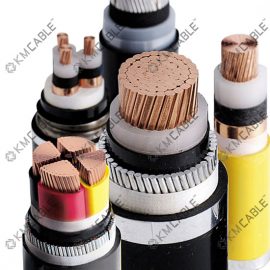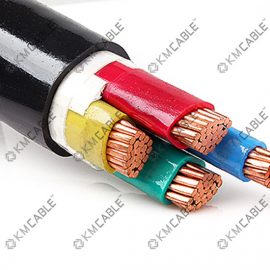
| Brand | KMCable |
|---|---|
| Conductor | copper |
| Core | Multi |
| Color | Black |
| Temperature (°C) - flexing | -5°C to +70°C |
| Nominal voltage U0/U | 0.6/1kV |
| MOQ | 300M/Roll |

| Brand | KMCable |
|---|---|
| Conductor | copper |
| Core | Multi |
| Color | Black |
| Temperature (°C) - flexing | -5°C to +70°C |
| Nominal voltage U0/U | 0.6/1kV |
| MOQ | 300M/Roll |

| Brand | KMCable |
|---|---|
| Conductor | copper |
| Core | Multi, Single Core |
| Color | Black |
| Temperature (°C) - flexing | -5°C to +70°C |
| Nominal voltage U0/U | 0.6/1kV |
| MOQ | 300M/Roll |
XLPE cable
What is XLPE Cable?
XLPE cable stands for cross linked polyethylene cable. It is a hydronic tubing manufactured from polyethylene plastic. XLPE features a 3D molecular bond structure and shape memory characteristics.
What are the benefits of XLPE?
XLPE cable is designed to withstand voltages ranging from low to extra-high voltage. XLPE electrical cable can be used for long cable routes in high voltage transmission where the dielectric losses play a significant role.
Due to its structure, XLPE is extremely resistant to abrasion and other wear and tear. It also boasts resistance to high voltage electricity, chemicals, and other hazardous materials. Cross-linked polyethylene insulation is also a more affordable option.
When should XLPE cable be used?
This question is asked so frequently, it got its own blog post! Check out “Applications of XLPE.”
In short, XLPE cable should be used in industries that expose wire and cable to:
- Extreme temperature conditions (high and low)
- High voltage electrical applications
- Abrasion and stress
- Water and other liquids
- Chemicals and other hazardous materials
XLPE cable can be used for plumbing, mining, and various electrical applications. Cross-linked polyethylene cables can also be found across the chemical industry and within the commercial and residential heating industry. Don’t forget about dentists’ offices and other medical institutions, groundskeeping at stadiums and other venues, and much more.
What’s the difference between XLPE insulation and PVC insulation?
XLPE, as explained above, is cross-linked polyethylene material. PVC stands for polyvinyl chloride insulation.
The main difference between the two is that XLPE can be used for both high and low tension applications. Its structure provides great resistance to abrasion, stress, and other wear and tear. PVC insulation cannot withstand as much pressure, meaning it is only suitable for low tension applications.
Other differences:
- XLPE insulation tends to last longer than PVC insulation
- Since XLPE doesn’t contain chloride, it is more environmentally friendly
- XLPE insulation can withstand higher temperatures
- Cross-linked polyethylene features more moisture resistance
Categories
- 0.6/1 kv Power Cable (17)
- LS0H/LSZH cable (2)
- PVC Cable (3)
- Rubber Cable (9)
- XLPE cable (4)
- Automotive wire (39)
- American standard wire (9)
- Car Battery Cable (34)
- Euro standard wire (12)
- EV Cable (8)
- Japanese standard wire (7)
- Coil cable (34)
- PUR cable (12)
- PVC cable (3)
- Rubber cable (9)
- Spiral cable assembly (10)
- Flexible control cable (2)
- Genie Parts (5)
- Industrial Wire Cable (33)
- CCC wire (5)
- CE Cable (3)
- Data cable (6)
- Drag chain cable (7)
- Robot cable (2)
- Servo cable (3)
- Special cable (3)
- UL wire (3)
- Media Cable (5)
- Microphone Cable (1)
- Speaker cable (4)
- Other (4)
- Ready to Ship (23)
- Single Core Cable (21)
- CE certificated cable (7)
- Drag chaine cable (2)
- Photovoltaic cable (5)
- PUR flexible cable (3)
- Solar Cable (7)
- UL certificated cable (3)
- Trailer Truck Cable (26)
- Coil Cable Assembly (16)
- Trailer cable (10)
- Wire harness for industry (7)
Producer
Price

As direct sale from our factory, we offer bellow benefits:
- Best price on the market guaranteed !
- The option to modify the product, such as the color, the length, you name it!

